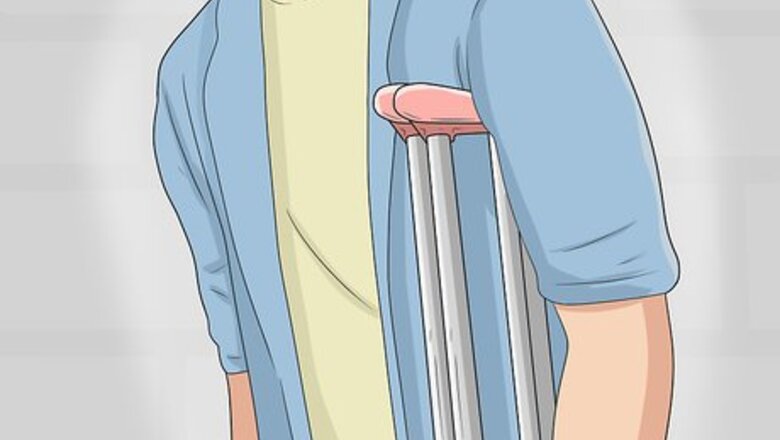
views
Stairs with a Railing
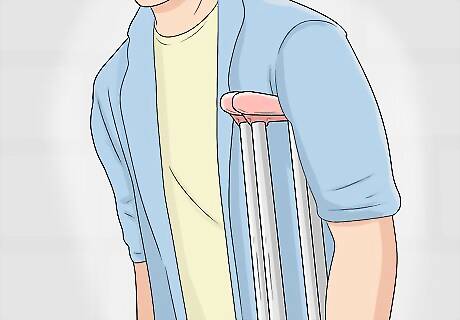
Situate the 2 crutches under one arm. If there’s a stable railing to use, you’ll want to only use one arm with your crutches so the other arm can hold onto the railing. Stack both crutches against one another under one arm, stretching your grip so that you’re holding both of them steady. Consider having a friend or family member carry the extra crutch up the stairs if possible so you’re not carrying both at once.
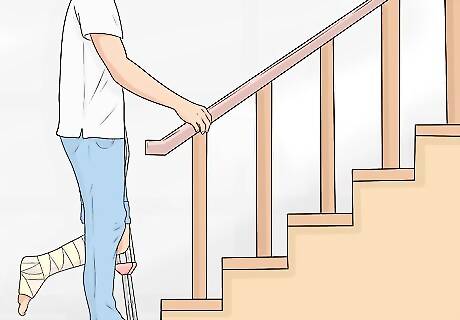
Hold on to the railing with your other arm. While one arm is using the crutches, place the free arm on the railing. Situate yourself close enough to the steps so that you’ll be able to pull up onto the railing without any problem. If you have one arm that’s stronger or more stable than the other, it might be best to use this one on the railing.
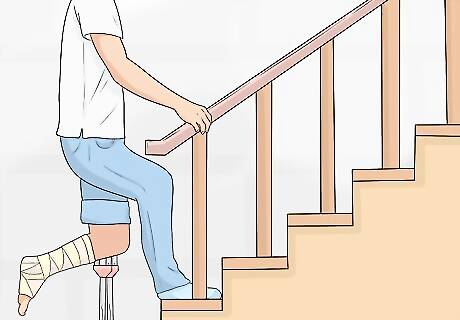
Step up using your good leg while relying on the railing. With your weight supported on one side by the crutches, step up onto the first stair with your good leg. As you’re moving upwards, grip the railing to pull yourself up. This will help you balance while making sure you put little to no weight on your weak leg. Make sure your knee is bent so it doesn’t touch the stair if you’re not allowed to put weight on it.
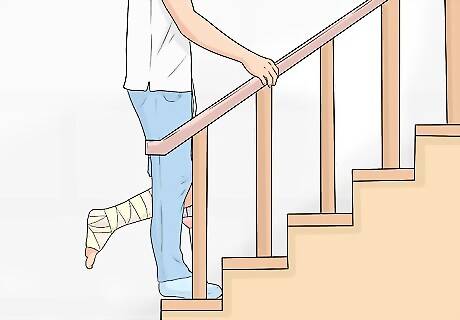
Bring the crutches up to the step carefully. This is where balance is a little more important—continue holding on to the railing and putting your weight on your good leg. Once you’re balanced on the step and aren’t putting any weight on the crutches, bring them up to the stair with your one hand. Make sure your crutches have a firm grip on the stairs once you bring them up.
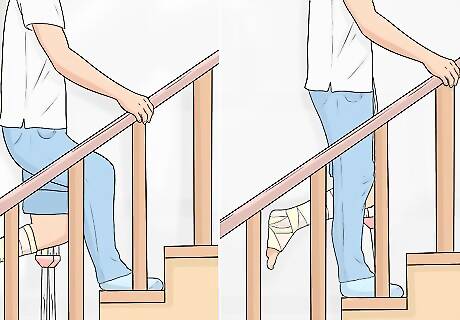
Continue using your lead foot to move up the stairs using the railing. With both of your feet on the same stair as the crutches, continue the process over again starting with your lead foot each time. Make sure you keep a strong grip on the railing and go slowly to avoid falling. Ensure you have a tight grip on both crutches before moving up each step.
Stairs without a Railing
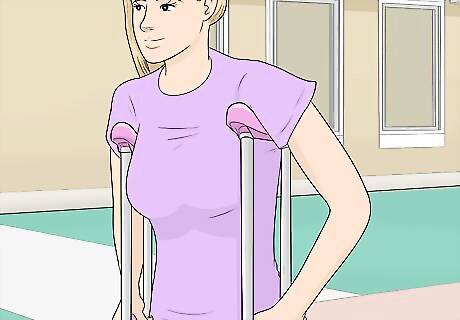
Keep one crutch under each arm. If there’s no railing on the staircase, you’ll need to put a crutch under each arm as if you were walking with crutches normally. This is a more dangerous way to go up the stairs, so make sure your grip on your crutches is strong and that you’re using them correctly. Your weight should be supported by the feet of the crutches as you support your body on them. Make any height adjustments to the crutches before going up the stairs if necessary—they should fit under your shoulders comfortably as you're standing up straight.
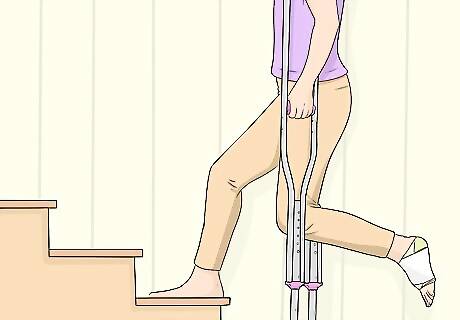
Step up onto the stair with your lead leg. Bring yourself close to the bottom step with your crutches on either side of you supporting your weight. Use your lead leg, or the leg that isn’t injured, to step up onto the first step. If the step is high up, you may need to do a slight hop to reach it. Make sure your crutches are stable before doing this.
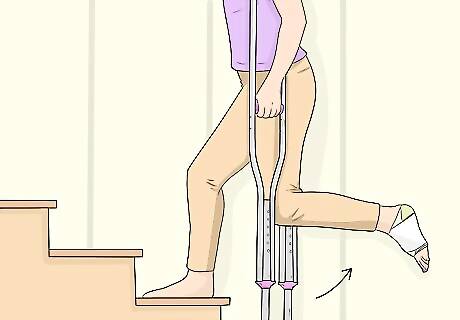
Press down on the crutches and bring your weaker leg up. With your lead leg already on the next step, use the crutches to support you as you bring your injured leg up next. Be careful not to lean backwards—try to keep your weight centered, or slightly forward if necessary. Keep your injured leg bent if you’re not allowed to put weight on it. If you can put weight on your injured leg, step up lightly with it to give yourself extra balance.
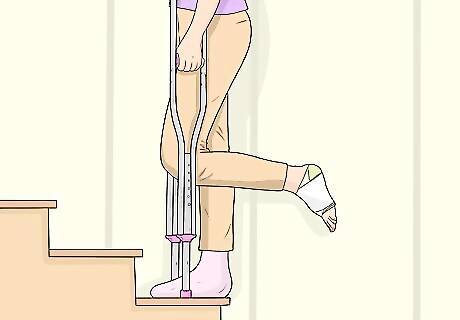
Bring both crutches up to the same step as your feet. Shift your weight so that you’re relying on your lead leg instead of the crutches to support you. Bring the crutches up to the step, being careful to lift them up enough so that they don’t hit the edge of the step. Stay balanced and avoid leaning backwards.
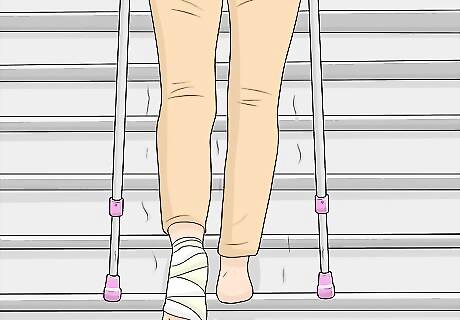
Take time to catch your balance. This method of ascending the staircase can be trickier, so take your time and go slowly if needed. Make sure you’re balanced each time you bring the crutches off of the step to go up to the next one, as this is when you’re least stable.
General Tips
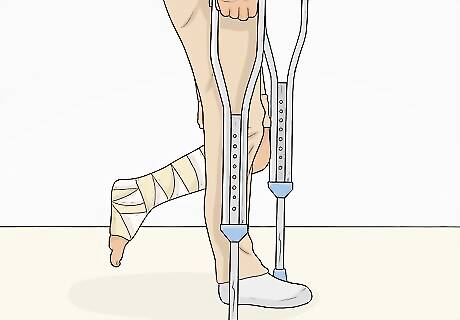
Lead with your strong leg. Your strong leg is also known as your good leg, or the leg that isn’t injured. This will be the leg that you’ll rely on most to help you climb the stairs. Whenever you go up the stairs with crutches, whether there’s a railing or not, use your strong leg to step onto the stair first before pulling up the injured leg.
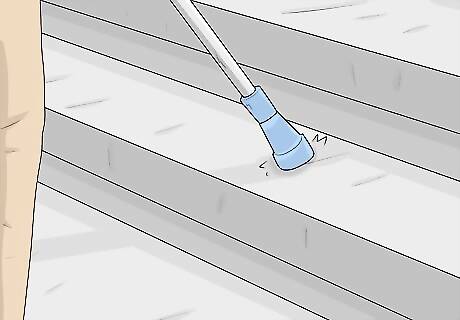
Keep the crutches away from the edge of the stairs. If your crutches reach too close to the edge of the staircase, they may slip right off of the stairs. Try to keep the crutches as centered on the stairs as possible to prevent any injuries. Keep the crutches as close to your body as possible.

Bend your knee if you can’t put weight on your bad leg. If your doctor tells you your leg is non-weight bearing, this means you shouldn’t put any weight on it at all while going up the stairs. To avoid accidentally using your bad leg while going up, bend your knee and lift your foot up so that it won’t hit the stairs. Even if you’re allowed to put a little weight on your bad leg, it’s best not to rely too much on it to help you up the stairs.
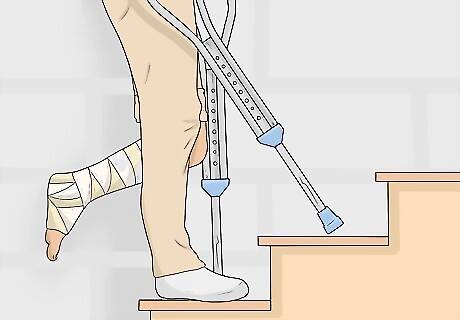
Take your time ascending the stairs. Remember not to rush—using crutches can be tricky, especially when stairs are involved. Check your balance after each step, and make sure that you feel stable before attempting to go up the next one.
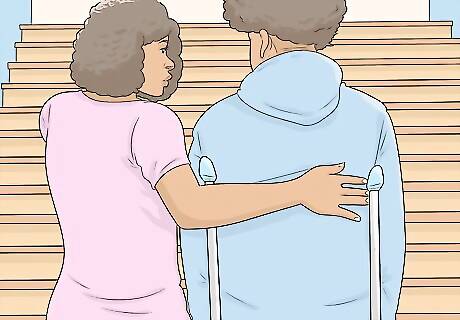
Make sure someone is nearby in case you need help. If possible, have a friend or family member near you as you’re ascending the stairs. Even if they’re in a different room, having someone who can hear you if you shout for help in an emergency is ideal. If no one is nearby, try to carry your phone in your pocket (not in your hands!) in case you need to call someone for help.













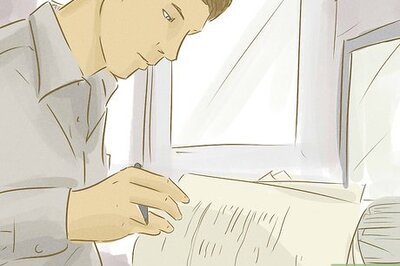





Comments
0 comment